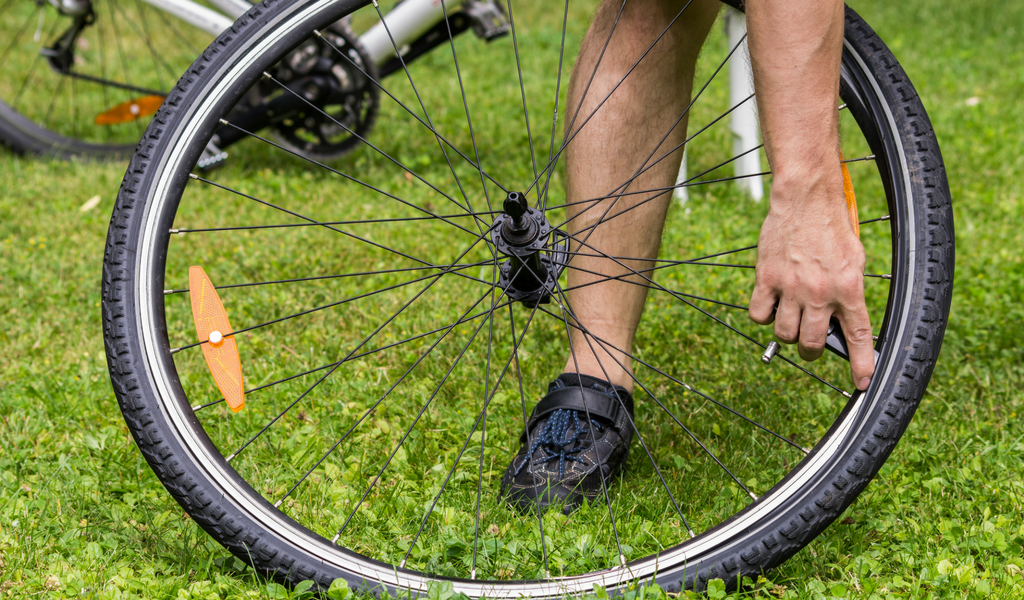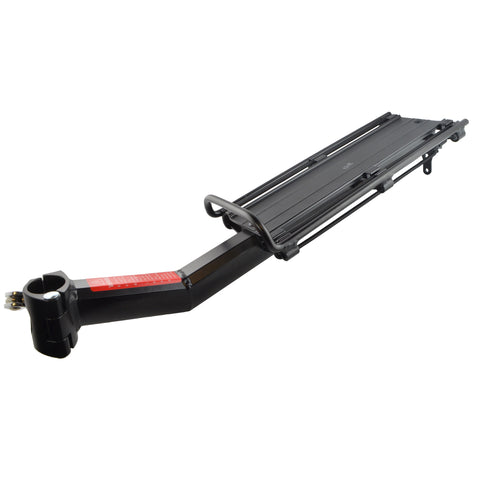
Beginners Guide to Bicycle Pumps - How to Pick the Best Pump for your Cycling Needs
Anyone who has ever taken a seat on a bicycle, has experienced the feeling of a low or flat tire. Inflating a tire is a mundane task that bicycle owners deal with on a regular basis. However, those new to owning a bike or cycling in general, may not be familiar with the different type of pumps available to them or what they may need. While not overly complicated, there are different things to consider when purchasing a pump.
The first thing to take into consideration is that most bikes have two different valve styles: Presta and Schrader. Presta is a valve commonly found in high pressure road style and some mountain bikes.

Image of Presta valve via wikipedia. © CC BY-SA 2.5
Schrader valve, also called the American valve, is a tire valve use on virtually every motor vehicle in the world as well as most wide rimmed bicycle tires.

Image of Schrader valve via wikipedia. Schrader valve components (from left to right) the valve core closed (top) and open (bottom), the order of assembly, end view of stem without core and with core (top) and stem with dust cap on (bottom). © CC BY-SA 3.0
Many bike pumps are compatible with both valves but it is a good idea to know what kind of tire you have and what valve it requires before purchasing a pump.
TIRE PRESSURE
Another thing to keep in mind is the amount of pressure your tires require. You can find this number on the side of the tire tube which will come in measurements of psi (pounds per square inch) which is primarily used in the US or kPa (kilopascal) a more common measurement around the world. For purposes of this post we will stick with psi. There will usually be a range for the psi, for example 50 - 75 psi. Inflating to the lower number in the pressure range will increase traction and make the ride more comfortable. Inflating to the higher number will make the ride more efficient and will decrease the chances of getting a flat tire but it will be a more firm ride.
The size of the pump does not determine the pressure - but the size determines how much air can be delivered by the pump. Larger floor pumps can do the job faster and have pretty accurate gauges. They do a good job of inflating a tire but are totally impractical to bring with you on your ride. A better option for that scenario are mini pumps. These pumps are light weight, small enough to carry with you and many have mounts that can attach directly to your bike. However, they require a lot more effort to fully inflate a tire and have less accurate gauges.
FLOOR PUMPS
To help you decide which pump might be right for you, here’s a list of the common types of bicycle pumps.
1. Floor Pump


Floor pump, also referred to as a “stand or track pump” is a standard type of pump that every bicycle owner should have in their home. They are usually about 2 feet high and allow the user to stand on the base while using the handle to pump air into the tire. Because of their ability to inflate tires to high capacity quickly, they are the most efficient pump option. However, because of their size, they are heavy and bulky to bring along on a bike ride.
2. Mini Pumps

A mini pump, also known as a “hand pump” is a great option for emergency use on the road. They are small and lightweight, easily carried in a backpack, pocket, side saddle or some also come with mounting gear to attach to the top tube. While mini pumps do the job well, they provide less air volume with every pump so it requires a lot more effort by the user to inflate the tire.
3. CO2 Inflators
These modern gas pumps are often used by mountain bikers or road bike racers to quickly inflate their tire during a race. They are not a common tool for most bicycle riders, especially since they have a one time use, although you can carry multiple cartridges if needed. With this type of pump it is also difficult to gauge the amount of air used to inflate the tire. Technically they aren’t a pump but rather a cartridge since they don’t actually require the user to do any pumping, instead the cartridge is filled with Carbon Dioxide and standard-threaded 16g CO2.
4. Electric Pumps
So how can you inflate your tires without expending any physical energy? An electric pump can do the job. These pumps, also known as compressors, are obviously not actual pumps since they too require no user to pump. But they are a good alternative for individuals who don’t want to waste their energy before even getting on their bike. These pumps are 12 volt compressors that can also be used to pump up car tires. They are large and heavy so like the floor pumps these are best left at home.
5. Foot Pump
A foot pump is a device that uses the foot to push air through the hose to inflate the tire. These pumps are not specifically made for bicycle tires as they don’t generate a lot of high pressure and are not great for narrow road bike tires. But they are fine for mountain bike tires. Many foot pumps come with adapters for both valves along with additional attachments for inflating sports balls, rafts and more.
We hope you found this information helpful. Check out our selection of bicycle pumps on our lumintrail website. For more information you might be interested in our blog post Everything you Need to Know About Bicycle Pedals.




